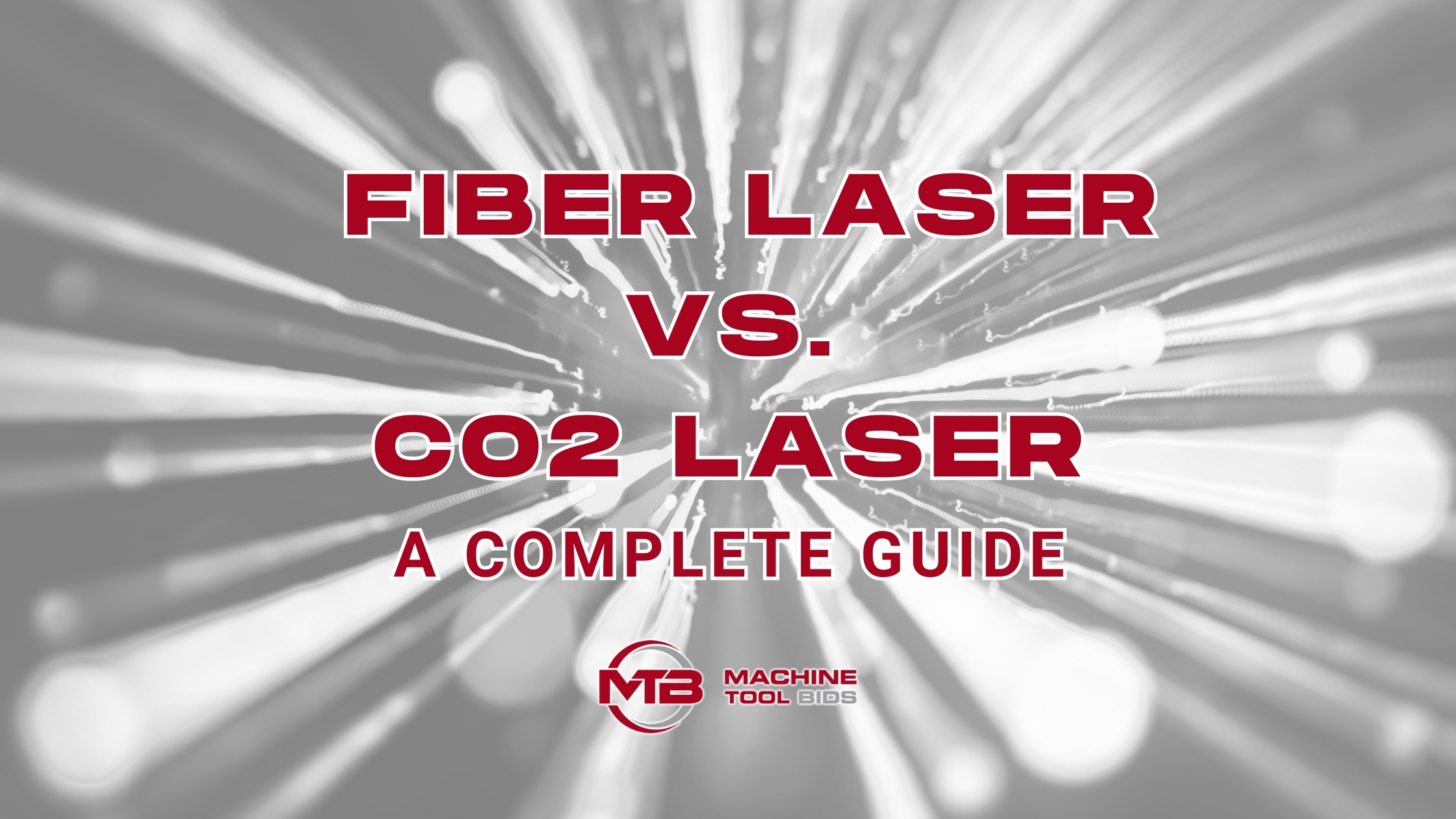Guide to Buying Used CNC Equipment
Finding a used CNC machine for sale can save your business thousands while getting the precision equ...
Read More CNC machinery
CNC machinery

Author: Matt Spiller | 29 September 2025
When it comes to laser cutting, engraving, and marking, two of the most popular technologies are fiber lasers and CO2 lasers. Both offer precision and efficiency, but they have distinct differences that make each suitable for different applications. Whether you’re looking to invest in new equipment or trying to understand the capabilities of your current machine, this guide will help you compare fiber lasers and CO2 lasers in terms of performance, material compatibility, cost, and more.
A fiber laser uses a solid-state laser source, typically a fiber-optic cable doped with rare-earth elements like ytterbium. The laser light is generated within the fiber and transmitted along the cable to the cutting head. Fiber lasers are known for their high energy efficiency and ability to produce very fine beams.
- High Power Efficiency: Fiber lasers convert up to 30% of the energy into laser light, making them highly energy-efficient.
- Compact Design: The solid-state design means fiber lasers are often smaller and more durable.
- Fast Cutting Speed: Due to their high power density, fiber lasers excel at cutting through metals and are quicker compared to CO2 lasers for certain materials.
A CO2 laser is a gas laser that uses carbon dioxide as the lasing medium. The gas is excited by electrical currents to produce infrared light. CO2 lasers have been used in the manufacturing industry for decades and are known for their versatility and precision.
- Wider Material Compatibility: CO2 lasers can cut a broader range of materials, including plastics, wood, and glass, in addition to metals.
- High Quality Beam: The beam from a CO2 laser is highly consistent and provides excellent edge quality.
- Established Technology: CO2 lasers are more widely available and have been trusted in industries for a longer period.
- Fiber Lasers: Best suited for metals like stainless steel, aluminum, and brass. They can also handle certain plastics and thinner materials, but their versatility is lower compared to CO2 lasers when it comes to non-metallic materials.
- CO2 Lasers: These lasers are more versatile when it comes to materials. They can handle not only metals (though at a lower efficiency) but also plastics, wood, glass, acrylic, rubber, and even fabrics. They are ideal for a broader range of industries, including engraving on non-metal surfaces.
- Fiber Lasers: Fiber lasers tend to be faster when cutting metals because their high energy density allows them to cut through materials quickly. They also provide better precision, especially with thin materials.
- CO2 Lasers: CO2 lasers are slower when cutting metals but excel in precision when cutting thicker or denser materials like wood or plastics. They provide high-quality cuts and fine engraving details.
- Fiber Lasers: While fiber lasers typically have a higher initial cost, their operating costs can be lower over time due to energy efficiency and fewer maintenance requirements (no need to replace gases like CO2 lasers).
- CO2 Lasers: CO2 lasers have a lower upfront cost but tend to have higher operating costs due to the need for regular maintenance, replacement of gas tubes, and higher energy consumption.
- Fiber Lasers: Fiber lasers are more energy-efficient, converting more energy into laser output, which lowers overall power consumption.
- CO2 Lasers: CO2 lasers tend to consume more energy for the same level of output and are less efficient in comparison.
- Fiber Lasers: The initial cost of a fiber laser system can be higher than a CO2 laser due to the newer technology and specialized components.
- CO2 Lasers: CO2 lasers are often more affordable upfront, especially for smaller operations or those working primarily with non-metal materials.
- Choose a Fiber Laser If: You primarily need to cut metal, especially at high speeds and precision. They are ideal for industries like aerospace, automotive, and metalworking where fast cutting and minimal material waste are essential.
- Choose a CO2 Laser If: You need to work with a wider range of materials, including wood, acrylic, plastics, and fabrics. They are ideal for engraving, cutting thicker materials, or if you require versatility for different applications in manufacturing, signage, or creative industries.
Both fiber lasers and CO2 lasers offer powerful solutions for various cutting, engraving, and marking applications. Fiber lasers are perfect for high-speed metal cutting and precision, while CO2 lasers shine in versatility, cutting a wider variety of materials. Choosing the right laser depends on the materials you plan to work with, the speed you require, and your budget. Whatever your needs, understanding the differences between these two technologies can help you make a more informed decision for your manufacturing or business needs.